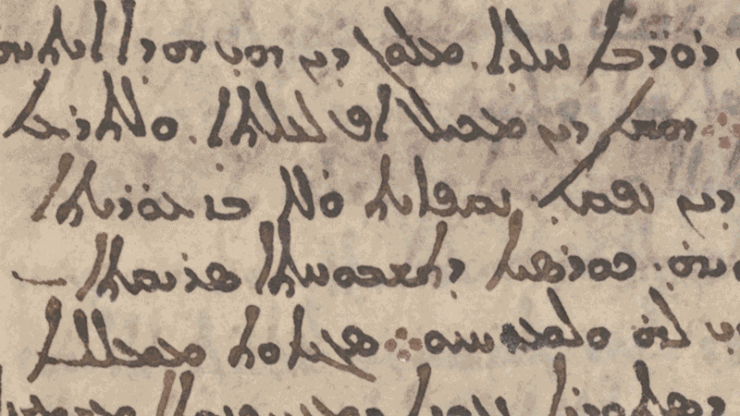The world’s oldest star map, has been discovered inside a medieval manuscript. There is proof that Hipparchus, the “founder of scientific astronomy,” created the map.
The star map fragment, discovered beneath the text on a sheet of medieval parchment, is likely to be part of the long-lost star catalog of Hipparchus, the Greek astronomer who made the first known attempt to catalogue the entire night sky in the second century B.C. The fragment was discovered beneath nine leaves, or folios, of the holy Codex Climaci Rescriptus in Egypt’s Sinai Peninsula’s St. Catherine’s Monastery.
The codex is a palimpsest, meaning the original writings have been scraped from their parchment to make way for a collection of Christian Palestinian Aramaic texts telling stories from the Old and New Testaments. (Palimpsest is called a parchment, in which the writing on it was erased and another inscription was rewritten in ancient times.) The researchers initially believed that even older Christian texts were hidden beneath the pages, but multispectral imaging turned up something more unexpected: measurements of the Corona Borealis constellation’s length and width in degrees as well as the coordinates of the stars at its furthest corners.
Victor Gysembergh, a science historian at the study’s principal investigator at the French National Center for Scientific Research (CNRS) in Paris, said in a statement to Nature, “I was very excited from the beginning”. “It was immediately clear we had star coordinates.”
The researchers’ excited grew when the precise coordinates enabled them to estimate the date when the coordinates were written down. Around 129 B.C., when Hipparchus was a seasoned astronomer wondering over the night skies.
Hipparchus (approximately 190 B.C. to 120 B.C.) spent much of his final years making astronomical observations from the island of Rhodes. Although there is little documentation of his life, historical texts credit him with a number of impressive scientific advances, including accurately modeling the motions of the sun and moon, inventing a brightness scale to measure stars, further developing trigonometry, and possibly inventing the astrolabe, (a handheld disc-shaped device that can calculate the precise positions of the heavenly bodies.)
Hipparchus discovered something unexpected in the night sky in 134 B.C., a brand-new star had appeared in a region of the sky that had previously been unoccupied.
Hipparchus went on to list approximately 850 stars in the night sky, noting their precise location and brightness. Hipparchus discovered that distant stars had appeared to change 2 degrees from their initial locations by comparing his entire star chart with more fragmented readings of individual stars made by previous astronomers.



He accurately deduced the cause of the apparent shift in the locations of the stars: Earth was gently precessing, wobbling on its axis like a spinning top at a pace of one degree every 72 years.
Pliny the Elder, a famed naturalist and military leader of the early Roman Empire, in his book “Natural History”, “And consequently, he did a bold thing, that would be reprehensible even for God. He dared to schedule the stars for posterity,” wrote.
The researchers took 42 photographs of each of the nine pages across a broad range of wavelengths before scanning the photos with computer algorithms that picked out the text hidden underneath. then used the same concept of Earth’s planetary precession that had arisen from the chart to identify it after reading the coordinates from the chart fragments. They turned back time, turning the stars of the Corona Borealis to the year when the lights appeared in the sky at the precise location the secret writing described.
The researchers confirmed that the Aratus manuscript’s coordinates for the constellations Draco, Ursa Major and Ursa Minor also landed on 129 B.C. by comparing their wound-back night sky to a separate medieval Latin manuscript called Aratus Latinus, long thought to contain a partial copy of Hipparchus’ original catalog, providing compelling indirect evidence that the newfound fragment originated from the same source as the manuscript.
According to the news of Live Science, the researchers intend to expand their investigation by improving their imaging techniques and scanning more of the codex. The majority of the 146 folios of the manuscript are now owned by American billionaire and Hobby Lobby founder Steve Green and displayed in his Museum of the Bible in Washington, D.C.
Aside from the codex, the researchers believe that additional pages from the star catalog may be hidden among the more than 160 palimpsests in St. Catherine’s Monastery.
